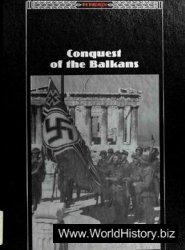The Kotoko, an ethnic group in present-day Cameroon, Chad, and Nigeria, ruled a kingdom in West Africa that controlled large areas of northern Cameroon and northeastern Nigeria until the 15th century, when they were conquered by the Kanuri of the Bornu kingdom.
Made up of several smaller kingdoms, including the Makari, Mara, Kousseri, and Logone-Birni, the Kotoko kingdom was organized into a large state ruled by a single king. The kingdom included a northern and southern division, making it easier for the kingdom’s policies to be administered. Before its defeat and incorporation into the Bornu kingdom, the Kotoko peoples converted to ISLAM, introduced into the region by Muslim missionaries.
Further reading: “Kotoko,” in Africana: The Encyclopedia of the African and African American Experience, eds. Kwame Anthony Appiah and Henry Louis Gates, Jr. (New York: Basic Civitas Books, 1999), 1,106; “Kotoko,” in Historical Dictionary of the Republic of Cameroon, 2nd ed., eds. Mark W. DeLancey and H. Mbella Mokeba (London: Scarecrow Press, 1990), 118.
—Lisa M. Brady
Lane, Ralph (?-1603) colonial governor Known more as military commander than a maritime adventurer, Lane served as the first governor of Virginia in 1585-86.
Little is known of Lane’s early life. After serving Queen Elizabeth I in a number of capacities in the realm of public security from 1570 to 1585, he sailed for North America under the command of Sir Richard Grenville. Holding a royal patent to the Virginia area of mainland North America, the expedition was initiated and funded by Sir Walter Ralegh. After a harried voyage that stopped at Hispaniola, the expedition passed up the coast of Florida, arriving in June at Wokokan, one of the many islands off the coast of North Carolina, or “Virginia,” as the English then termed the region. Here the party established a colony with Lane as governor. Grenville departed two months later, but not before the two brash personalities clashed in a bitter dispute.
Following Grenville’s departure, the colony was moved to Roanoke, and Lane’s party of 107 men quickly faced a number of urgent problems. The fact that no women and children were among the colonizers coupled with little evidence of Lane’s party cultivating the land displayed how far the English were from the concept of planting a self-sustaining society at this time. As provisions withered, frustrations mounted. Many of the men under the employ of Ralegh arrived hoping to find riches in precious metals. Lane was also gravely disappointed that the area yielded neither the immediate prospect of riches nor an inland water route to Cathay. Further difficulties arose when the relations between the settlers and the Native population became strained as Wingino, chief of the neighboring Secota Indians, grew increasingly frustrated with the English colonizers.
In 1586, following a difficult winter, Lane led a search expedition north to the Chesapeake Bay area hoping to find a narrow land mass leading to the Pacific, much like the Isthmus of Panama. In addition, he had heard an alluring tale about a tribe in the north that possessed copper in abundance and lived near a great sea. Lane’s hopes were quickly dashed on both fronts, and the expedition party returned to Roanoke. Weeks later, Sir Francis Drake, fresh off a triumph in the Caribbean, arrived off the coast of Roanoke to check on Ralegh’s colony. Frustrated, Lane convinced Drake to return all the colonists home to Portsmouth. Although there is no direct evidence, it is possible that Lane and his fellow colonizers first brought tobacco and potatoes to England at this time.
Upon his arrival home, Lane prepared to defend his motives for the decision to abandon Virginia, citing the area’s harsh conditions. Two of Lane’s party left a more memorable impression: chroniclers Thomas Harriot and John White, whose maps of the landscape and sketches and depictions of the Native Americans were quickly circulated in the promotional literature of Richard Hakluyt the Younger. Following stints in which he served under expeditions of both Drake and Sir John Hawkins, Lane was appointed to the office of muster-master in Dublin, a post occupied until his death in 1603.
Further reading: Stephen Coote, A Play of Passion: The Life of Sir Walter Raleigh (London: Macmillan, 1993); Robert Lacey, Sir Walter Ralegh (London: Weidenfeld & Nicholson, 1973); Peter C. Mancall, ed., Envisioning America: English Plans for the Colonization of North America, 1580-1640 (Boston: Bedford, 1995); David Beers Quinn, ed., The Roanoke Voyages, 1584-90 (New York: Dover, 1991).
—Matt Lindaman




 World History
World History









